The Gay Men’s VD Clinic, part of the Washington Free Clinic, begins operating in the basement of the Georgetown Lutheran Church.
Since 1973, Whitman-Walker has been a place where people can just be themselves without fear of judgement or retribution. Learn more about our organizational roots below.
The Gay Men’s VD Clinic, part of the Washington Free Clinic, begins operating in the basement of the Georgetown Lutheran Church.
The clinic hires its first full time staff.
Clinic leaders separate from the Washington Free Clinic and begin to develop their vision for a new, diverse healthcare organization.
On January 13th Whitman-Walker Clinic is officially chartered. The DC Department of Human Resources provides $15,000, the first city funds to support the organization.
OCTOBER 1978
Whitman-Walker Clinic opens a new, rented facility at 1606 17th St, NW.
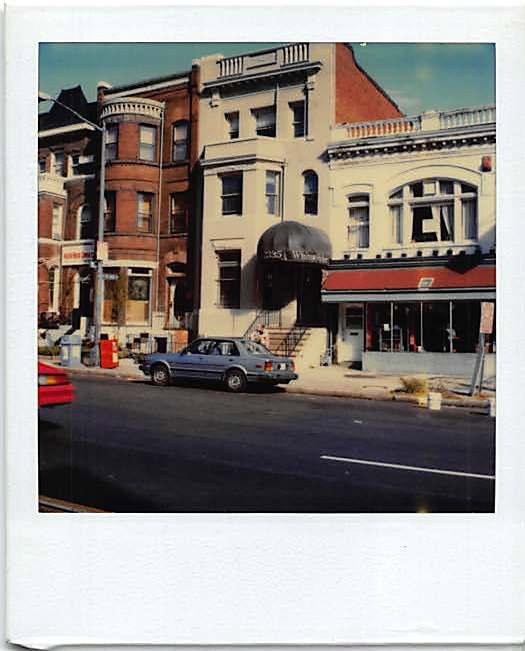
A financial crisis threatens the clinic. The administrator resigns; programs are eliminated. The clinic moves into more affordable space on 18th Street in Adams Morgan. An as-yet-unnamed mysterious new disease begins striking primarily gay men in the nation’s largest cities.
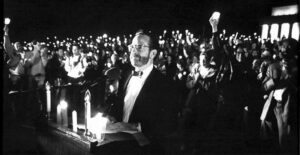
Board member Jim Graham becomes Clinic president.
JUNE 1981
The Centers for Disease Control and Prevention’s weekly Morbidity and Mortality Report contains an account of five young gay men who had an unusual cluster of infections. This is the first medical report on what would come to be known as AIDS.
SEPTEMBER 1981
Whitman-Walker hires its first board-certified medical technologist for an in-house laboratory.
The CDC identifies a condition that is later named Acquired Immune Deficiency Syndrome.
Whitman-Walker launches an AIDS Education Fund to provide information, counseling and direct services to people with AIDS. The first District of Columbia contract for AIDS services is awarded to Whitman-Walker: $17,500 to operate the DC AIDS Infoline. The Clinic begins its first prevention advertising campaign.
The Clinic opens an AIDS Evaluation Unit. It is the first gay, community-based medical unit in the country devoted to the evaluation and diagnosis of AIDS symptoms. Fifty-five patients are treated the first year, half have AIDS.
Whitman-Walker opens the Robert N. Schwartz, MD, House, the city’s first home for people with AIDS. A second house opens in December. The Clinic begins anonymous testing for what is then called HTLV-III, becoming the largest testing site in the region.
Whitman-Walker͛s housing program expands to four more homes. The Clinic opens a food bank; a full-time lawyer, Mauro Montoya, Esq., comes aboard to help people with HIV/AIDS handle legal issues, such as wills, power of attorney and disability entitlements. This is the beginning of what would become Whitman-Walker Legal Services.
FEBRUARY 1986
Whitman-Walker launches a Northern Virginia Project to provide services to people with AIDS in Northern Virginia. The Sunnye Sherman AIDS Education Program opens with a $180,000 HIV prevention grant from DC government.
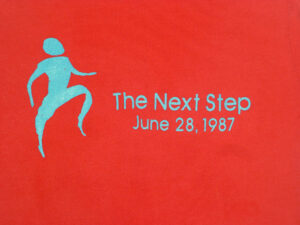
Whitman-Walker moves into a larger facility at 14th & S Streets, NW. AZT is approved as the first treatment for HIV, and the Clinic holds its first AIDS Walk Washington.
SEPTEMBER 1987
Whitman-Walker begins to offer dental care, making it one of three dental clinics for people with HIV in the nation. The Clinic opens the Scott Harper House for gay men and lesbians in recovery from substance abuse.
The Clinic dedicates its Project NOVAA office in Arlington, which provides case management and education.
APRIL 1989
The Clinic͛s main facility expands once more, allowing the food bank to move on-site. Whitman-Walker also becomes part of the National Institute of Health͛s AIDS Clinical Trials Program Group.
DECEMBER 1989
The Clinic dedicates the Stewart B. McKinney House, its first house specifically for families with HIV.
Whitman-Walker receives $142,000 from the American Foundation for AIDS Research (amfAR) to increase research studies as part of amfAR͛s clinical trials network. Whitman-Walker reaffirms its mission and dedication to lesbian and gay health by hiring full-time paid staff for the Lesbian Services and Mental Health Services programs.
Congress passes the Ryan White CARE Act, providing federal funds that allow Whitman-Walker Clinic to add transportation services, interpreting, a Spanish-speaking physician and full-time dentist.
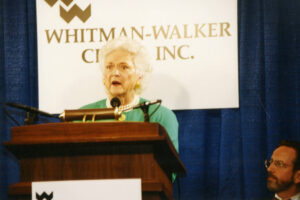
The Clinic dedicates a new outpatient care center for people with AIDS, the Bill Austin Day Treatment and Care Center. First Lady Barbara Bush attends the event.
The Clinic͛s volunteers receive President Bush͛s Points of Light Award.
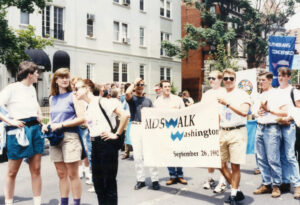
More than 20,000 walkers make AIDS Walk Washington the city͛s first $1 million AIDS fund-raiser. Donations through the United Way/Combined Federal Campaign top $1 million for the first time.
1992
Whitman-Walker Clinic of Suburban Maryland opens in Hyattsville.
1992
The first reports of successful combination drug treatments for AIDS are published.

The Max Robinson Center is dedicated in Anacostia in Southeast Washington, DC.
JULY 1993

The Elizabeth Taylor Medical Center is constructed to offer expanded services, including an eye care center, x-ray facilities, an expanded laboratory, a new dental facility and 12 examination rooms.
The Northern Virginia AIDS Project of Whitman-Walker Clinic expands and is renamed.
The Northern Virginia AIDS Project of Whitman-Walker Clinic expands and is renamed.
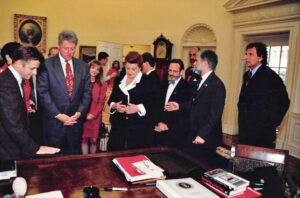
President Clinton holds the first White House AIDS Summit.
1995
The Food and Drug Administration approves 3TC, an anti-HIV drug, and the first protease inhibitor, Saquinavir. Measuring viral load proves a significant predictor of HIV disease progression.
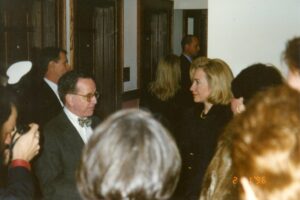
First Lady Hillary Rodham Clinton, Secretary of Health and Human Services Donna Shalala, National AIDS Policy Director Patsy Fleming, and French First Lady Bernadette Chirac visit the Clinic to participate in a roundtable discussion with women in the Woman͛s Interagency HIV Study.
The Clinic replaces traditional blood-based testing, with a breakthrough oral HIV test, which is just as effective as blood tests.
1997
Whitman-Walker Clinic receives a bequest from the estate of Dr. Richard Karpawich. This $2 million becomes the foundation of the clinics endowment.
The Washington AIDS Partnership awards Whitman-Walker a $42,000 grant to expand the Clinic͛s needle exchange program. Later this year, Congress passes a District budget with restrictions on federal funding for organizations conducting needle exchange programs. In response, an independent corporation is incorporated to fill the need called Prevention Works, Inc.
1998
Jim Graham resigns as executive director to serve on the DC City Council.
1998
The National AIDS Marathon Training Program is launched and raises $2 million for the Clinic.
The counseling and testing program goes mobile with a van that provides testing at health fairs, festivals and bars.
1999
Whitman-Walker is awarded $1.8 million to pay for increasing drug costs through the Pharmacy Drug Assistance Program. The Clinic also begins to accept Medicaid.
A. Cornelius Baker is appointed executive director of the clinic. Nearly all client services in Northwest DC are moved to the Elizabeth Taylor Medical Center.
Whitman-Walker's Northern Virginia site dedicates the Healing Garden and Labyrinth. Whitman-Walker partners with 13 other HIV/AIDS service organizations to promote a national education and awareness campaign: 20 Years of AIDS Is Enough. Public service announcements are broadcast on 225 TV stations and 260 radio stations around the country.
The Clinic operates the DC Department of Health͛s HIV/AIDS Information line in Spanish and English 24 hours a day. Latino outreach expands with a task force – Spanish Pathways – to ensure that programs and services are serving the Spanish-speaking community. Whitman-Walker also teams up with La Clínica del Pueblo in a new outreach program to the Latino community.
Nearly 1,000 people participate in the National AIDS Marathon training program and raise $2.5 million for Whitman-Walker.
2003
After a six-year partnership with One in Ten, Whitman-Walker Clinic becomes the sole presenter of Capital Pride.
Financial problems lead to the closing of the Schwartz Housing Program and the transition of all housing clients to other providers
2004
The CDC and CareFirst BlueCross BlueShield help the Clinic observe World AIDS Day by providing funds for two new mobile HIV testing units, one aimed at African Americans and the other at Latinos.
2004
A. Cornelius Baker resigns as executive director. Roberta Geidner-Antoniotti, the Clinic͛s managing director of operations, is tapped as interim executive director.
2004
The National AIDS Marathon program raises $3.4 million for the clinic. The Lesbian Services Program moves into new space at 1810 14th Street, NW.
Whitman-Walker Clinic opens medical and support services for the transgender community.
JUNE 2005
Whitman-Walker announces that financial difficulties will force it to close several programs, including the food bank and its sites in Virginia and Maryland. The District of Columbia provides a one-time grant of $3.2 million. Governments in Virginia pledge $800,000 to keep Whitman-Walker of Northern Virginia open through December 2006. This outpouring enables the food bank and the Northern Virginia regional center to remain open.
SEPTEMBER 2005
Whitman-Walker closes the suburban Maryland facility. The Max Robinson Center receives a $100,000 grant from the Fannie Mae Foundation to continue renovations.
The Clinic unveils a new business model to reduce its dependence on the government funding and private donations. The new model expands the clinic͛s primary medical care services and strives to bring in more clients with private insurance, Medicaid and Medicare.
2006

Don Blanchon is named the Clinic͛s executive director and chief executive officer.
The staff of the Washington Free Clinic join Whitman-Walker. The new staff allows Whitman-Walker to provide prenatal, postpartum, neo-natal and pediatric care for the first time.
MARCH 2007
Whitman-Walker is given a Federally Qualified Health Center Look-Alike designation by the Bureau of Primary Health Care.
DECEMBER 2007
Whitman-Walker begins to implement the use of electronic health records. Once completed, this new system provides faster and more efficient access to clients͛ medical records.
2007
A $120,000 grant from the DC Bar Foundation allows the Clinic to create two attorney positions at the Max Robinson Center, the first full-time Legal Services staff working in Anacostia.
Whitman-Walker announces several major changes, including the hiring of Dr. Raymond Martins as Chief Medical Officer, creation of the Medical Adherence unit to help patients with chronic conditions stick to treatments regimens, closing of the food bank, and some staff layoffs. The facility at 1407 S Street, NW, is sold to pay off longstanding debts and to consolidate all Clinic operations in Northwest DC under one roof at the Elizabeth Taylor Medical Center.
2008
Global economic crisis has severe impact on AIDS Walk and other Fall fundraising. Whitman-Walker reports a $4 million operating loss for the second year in a row. Whitman-Walker announces another round of layoffs and announces the closing of the Northern Virginia facility and the BridgeBack program.
Changes announced in December of 2008 lead to a very public and heated debate over Whitman-Walker͛s future. Allegations of financial mismanagement and of abandoning the LGBT community are reviewed by the law firm Arnold & Porter and found without merit.
2009
The DC Department of Health releases figures that show that 3% of all adults in the District of Columbia have been diagnosed with HIV. An additional 3% are believed to be infected but undiagnosed.
2009

Attorney General Eric Holder is honored with the Joel A. Toubin Memorial Award at the Going the Extra Mile, Whitman-Walker Legal Services͛ benefit reception.
2009
After two consecutive years of $4 million losses, Whitman-Walker posts a loss of only $750,000 for 2009.
Bolstered by increased revenue from third party payments, pharmacy sales and cutting unsustainable programming, Whitman-Walker posts its first operating gain in 2010. The gain of 4% or nearly $1.1 million was the first gain in a decade. Patient encounters increase by more than 21% over 2009.
2010
Miss America Caressa Cameron and POZ Magazine both receive the Partner for Life awards at Whitman-Walkers annual gala. POZ Editor in Chief Regan Hofmann is on hand to accept their award.
2010
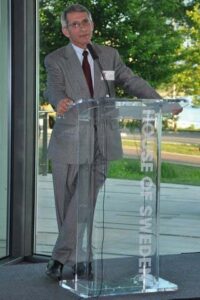
Dr. Anthony Fauci, Director of the National Institute of Allergy and Infectious Diseases, receives the Joel A. Toubin Memorial Award at Going the Extra Mile, Whitman-Walker Legal Services͛ benefit reception.
2010
PFLAG of Metro DC moves into open office space at the Elizabeth Taylor Medical Center.
In early 2011, Whitman-Walker announces that it had finished 2010 in the black, something it had not done in a decade. The 2% operating gain reflects the hard work and sacrifice for Whitman-Walker staff. Whitman-Walker also saw a 30% increase in patients between 2009 and 2010.
APRIL 2011
Whitman-Walker announces its new name: Whitman-Walker Health and unveils a new logo and website. The change emphasizes that Whitman-Walker is now a full-service, best-in-class health center for the metro DC community. The word Health conveys Whitman-Walkers current and future role as a health center with the highest quality of care for its patients.
Whitman-Walker cares for 15,515 individuals, a nearly 20% increase over 2010.
MARCH 2012
Whitman-Walker Health announces a $2.6 million operating gain in 2011, marking a nearly $7 million turnaround since 2007͛s $4+ million loss.
JULY 2012
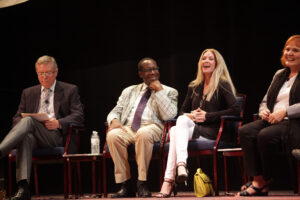
Whitman-Walker marks the International AIDS Conference in July 2012 with Return to Lisner, a community forum on HIV/AIDS held at the site of DCs first AIDS forum on April 4, 1983, also organized by Whitman-Walker. The forum draws hundreds to the Lisner Auditorium to hear speakers including Jeanne White-Ginder, the mother of Ryan White
Whitman-Walker Health announces the opening of a new medical home in 2015. A new building under construction at 1525 14th Street, about two blocks south of the Elizabeth Taylor Medical Center, will be leased. The new building will have 42,000 square feet of space for expanded and new health care services.
MARCH 2013
Whitman-Walker announces that it had ended 2012 with an unaudited $2.4 million surplus, the third year in a row in the black. It also ended with 2012 with high patient satisfaction rates and high quality of care indicators.
JUNE 2013
Mautner Project, the National Lesbian Health Organization, a DC-based nonprofit focused on the health care needs of lesbians and bisexual women, joins Whitman-Walker Health. All of Mautner Project͛s programs and employees become a part of Whitman-Walker Health, allowing Mautner͛s existing clients greater access to more healthcare services.
NOVEMBER 2013
Whitman-Walker Health receives a full Federally Qualified Health Center (FQHC) designation from the U.S. Department of Health and Human Services, bringing financial benefits through an annual operations grant and reduced costs for malpractice insurance. It also makes Whitman-Walker Health eligible for future federal grants given to FQHCs.
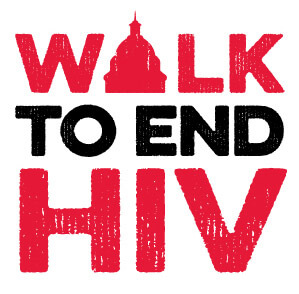
Whitman-Walker Health changes the name of its signature annual fall fundraising event, AIDS Walk Washington, to The Walk to End HIV.
2014
Whitman-Walker Health is proud to be recognized as a Top Workplace by The Washington Post.
2014
Two groundbreaking research studies are conducted at Whitman-Walker Health: The PrEP Demonstration Project and New Drugs Cure Hepatitis C. Both show the clinic͛s continued dedication to leading new ways to prevent and treat diseases.

Whitman-Walker celebrates the 30th anniversary of its Legal Services program, the oldest medical-legal partnership in the nation. What began during the AIDS epidemic as a way to help clients file powers of attorney and last will and testaments, now helps remove legal barriers to healthcare, support LGBTQ asylum seekers, and helps transgender and non binary people update the name and gender markers on their identity documents.
JUNE 2016

Whitman-Walker Health changes the name of its signature annual fall fundraising event, from the Walk to End HIV, to the Walk & 5K to End HIV in efforts to highlight the running component of the event and increase participation.
OCTOBER 2016
Whitman-Walker hosts its first East of the River Fall Festival at Max Robinson Center. The annual festival serves as a back-to-school supplies drive, health fair and block party for the Anacostia community.
NOVEMBER 2016
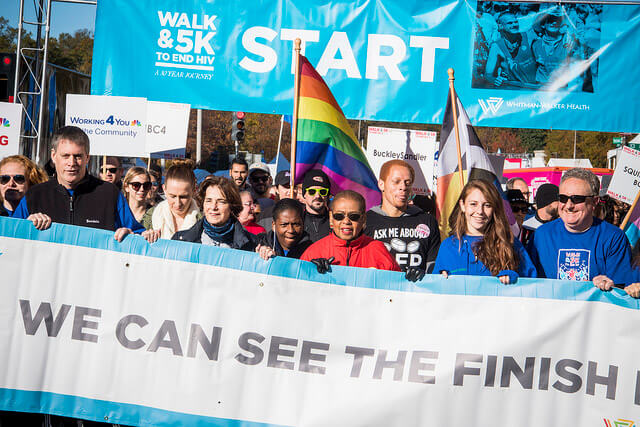
Whitman-Walker celebrates the 30th anniversary of the Walk & 5K to End HIV. More than 3,500 people participates in the Walk and raise $720,000 for a future free of new HIV infections and full viral suppression for people living with HIV
2016
Whitman-Walker releases plans for the redevelopment of the Elizabeth Taylor Medical Center. The building served as Whitman-Walker͛s medical and administrative home since 1993.
2016

Whitman-Walker launches the W See You campaign. Inspired by Whitman-Walker͛s dedication to seeing their patients as people first, the campaign embodies the inclusivity of Whitman-Walkers community and approach to healthcare
2016
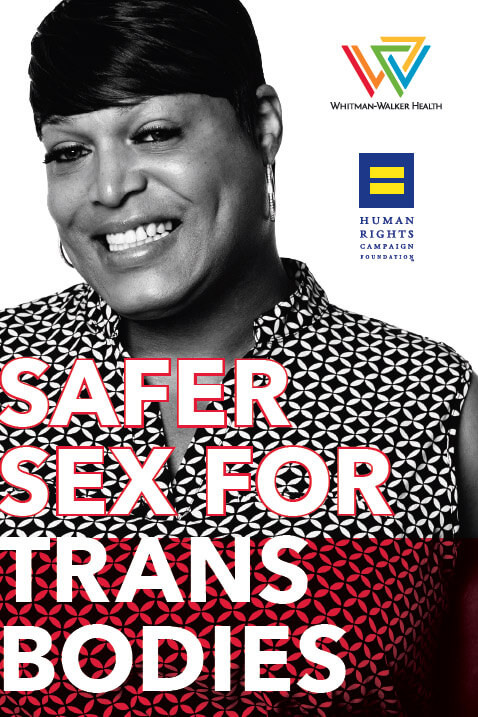
In partnership with the Human Rights Campaign Foundation, Whitman-Walker releases a first-of-its-kind Safer Sex for Trans Bodies guide to provide sexual health information to support transgender people, their partners and medical providers. The guide is also released in Spanish.

Whitman-Walker Health and Fivesquares Development, collaborate with creative art agency and events production company No Kings Collective to put a mural on the 30,000 square-foot Elizabeth Taylor Medical Center. Whitman-Walker receives a $25,000 grant from the DC Office of Planning to complete the project, test creative placemaking in the city and provide a summer event series with a focus on LGBTQ-inclusive programming at the mural.
JUNE 2017

Jim Graham, Whitman-Walker͛s first executive director, and leader of the organization during the height of the AIDS epidemic passes. He leaves behind a legacy of leadership and compassion.
JUNE 2017
Whitman-Walker Youth Services͛ Real Talk DC program hosts its 10th annual HoopN͛ for HIV basketball tournament. This all-day event features free HIV testing, food, music and trophies for tournament participants.
SUMMER 2017
PFLAG of Metro DC moves out of office space at the Elizabeth Taylor Medical Center.
AUGUST 2017
Whitman-Walker staff moves out of the Elizabeth Taylor Medical Center to locations at 1342 Florida Ave, NW at WeWork Manhattan Laundry and 1145 19th Street, NW in preparation for the redevelopment of the Elizabeth Taylor Medical Center.
OCTOBER 2017
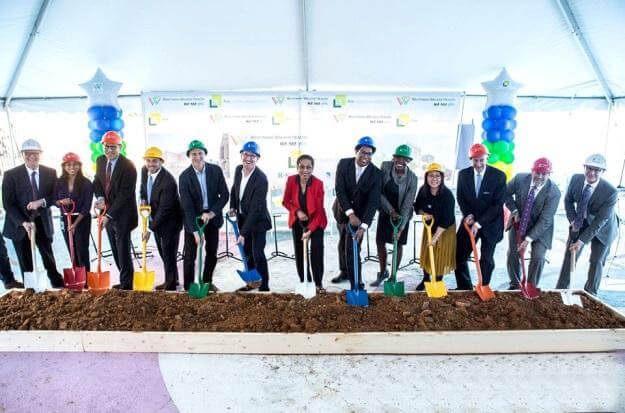
Whitman-Walker breaks ground in the redevelopment of the Elizabeth Taylor Medical Center. The building began construction in fall 2017 and is set to be completed in 2019.
2017
Whitman-Walker Health is proud to be recognized as a Top Workplace by The Washington Post.
2017
Whitman-Walker Health is honored to be recognized as a Best Places to Work by the Washington Business Journal.

Whitman-Walker celebrates its 40th anniversary as an incorporated nonprofit and 40years of service to the greater Washington, DC communities.
2018

Whitman-Walker͛s Max Robinson Center celebrates 25 years of healthcare services to DC͛s Anacostia community.
2018

Whitman-Walker Youth Services, formerly Metro TeenAIDS, celebrates 30 years of service to DC͛s young people.
2018
Whitman-Walker Health launches a new website.
Whitman-Walker at 1525
1525 14th St. NW
Washington, DC 20005
Whitman-Walker at LIZ
1377 R St. NW, Suite 200
Washington, DC 20009
Max Robinson Center
1201 Sycamore Dr. SE
Washington, DC 20032
Get the latest Whitman-Walker Health community news delivered to your inbox!
© 2024 Whitman-Walker. All Rights Reserved.